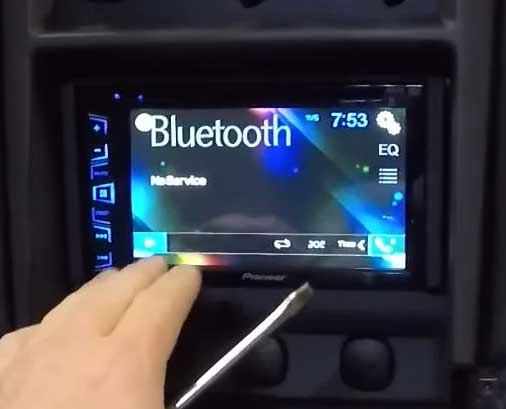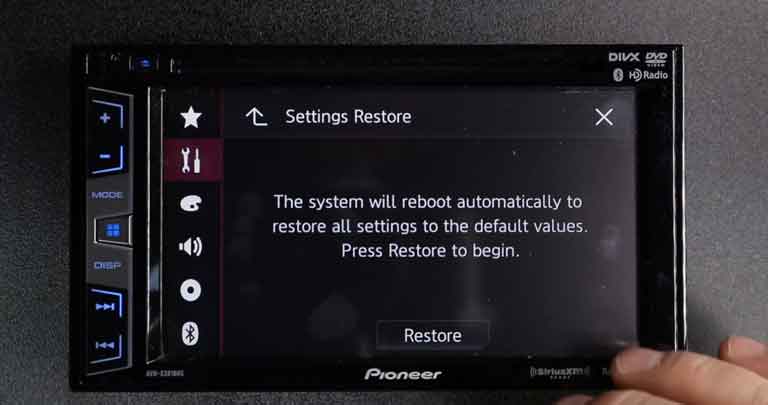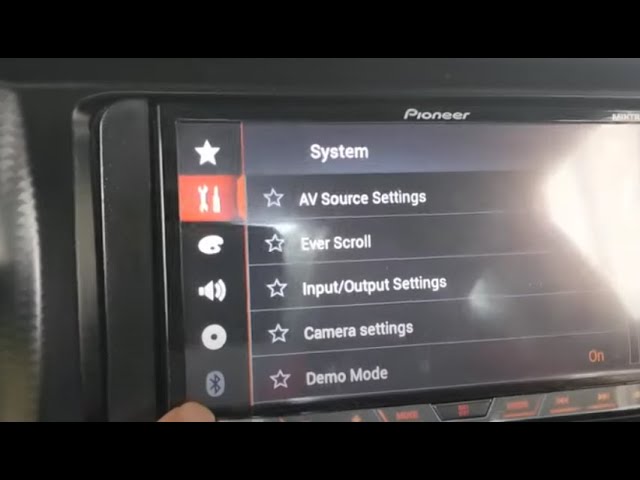The Pioneer rear speaker output is a feature that allows users to connect their speakers to the rear of their audio system. This feature can enhance the overall sound quality and provide a more immersive listening experience.
However, some users have reported that the rear speaker output is grayed out and cannot be used. In this article, we will discuss the possible causes of the issue and provide troubleshooting steps for users to try to resolve it.


Why Pioneer Rear Speaker Output Can Become Grayed Out?
There are several potential reasons why the Pioneer rear speaker output can become grayed out. Some of the most common include:
Incorrect settings:
The major reason why your Pioneer rear speaker output can become grayed out is incorrect settings. The rear speaker output may either be turned off or set to a different configuration in the audio system’s settings.
Incorrect settings can easily be fixed by checking the settings and ensuring that the rear speakers are properly configured.
Software/Driver updates:
Some software/driver updates may cause the rear speaker output to become grayed out. This is particularly common if the audio system is connected to a computer or other device that is frequently updated.
In this case, you should check for any available software/driver updates and install them to check if that resolves the issue.
Hardware malfunctions:
In rare cases, the rear speaker output may be grayed out due to a hardware malfunction. This could be caused by a problem with the speakers, audio system, or wiring. In this case, you may need to seek a professional for help or repairs.

Troubleshooting steps
If your Pioneer rear speaker output is grayed out, there are several troubleshooting steps that you can try to resolve the issue. Some of the most effective troubleshooting steps include:
Checking the settings:
As mentioned earlier, the rear speaker output may either be turned off or set to a different configuration in the audio system’s settings. You should check the settings and ensure that the rear speakers are properly configured.
Restarting the audio system:
Sometimes, restarting the audio system can resolve the issue. Turn off the audio system, unplug it, wait for a few minutes, plug it back into the main, and turn it on again.
Checking for software updates:
If the audio system is connected to a computer or other device that is frequently updated, you should check for any available software updates and install them to see if that resolves the issue.
Checking the speakers and wiring:
Another troubleshooting step is checking the speakers and wiring to ensure that they are properly connected and functioning.
By following the troubleshooting steps listed above, you should be able to resolve the issue of the Pioneer rear speaker output being grayed out. However, if the issue persists, you may need more advanced troubleshooting steps or professional help.
Advanced Troubleshooting
If the troubleshooting steps listed above do not resolve the issue of the grayed out Pioneer rear speaker output, here are a few more advanced troubleshooting steps that are worth trying:
Consulting the owner’s manual:
Every audio system comes with an owner’s manual that contains additional information or troubleshooting steps on how to resolve any likely issue. You should consult the owner’s manual and follow any additional steps that are recommended.
Checking for firmware updates:
Depending on the models, some audio systems may have frequent firmware updates that can help resolve the issue. You should check the manufacturer’s website to see if there are any available firmware updates for your audio system.
If firmware updates are available, download and install them accordingly.
Checking for compatibility issues:
If the audio system is connected to other devices, such as a computer or TV, you should check for any compatibility issues that may be causing the rear speaker output to become grayed out. You should also ensure that all connected devices are compatible and that the audio system is properly configured for the connected devices.
Seeking professional help
If all the above advanced troubleshooting steps still didn’t resolve the issue, you may need to seek professional help. Contact the manufacturer of the audio system to see if there are any additional troubleshooting steps that you can take to resolve the issue or whether the audio system needs repairs.
If the audio system is still under warranty, the manufacturer may cover the cost of repairs. Otherwise, you may need to pay out of pocket for repairs.
However, you should check the terms of the warranty before proceeding with the repair.

Conclusion
The Pioneer rear speaker output is a feature that allows users to enhance the overall sound quality and provide a more immersive listening experience. However, some users have reported that the rear speaker output is grayed out and cannot be used.
In this article, we have discussed the possible causes of the issue and also provided effective troubleshooting steps to resolve it. Nevertheless, if the issue persists, more advanced troubleshooting steps or professional help may be needed.
We hope this article was helpful in resolving the grayed out Pioneer rear speaker output and enhancing your listening experience.
How can I check the settings of my Pioneer audio system to see if the rear speaker output is properly configured?
To check the settings of your Pioneer audio system, you will need to access the menu or settings of the audio system. This can typically be done by pressing the “Menu” or “Settings” button on the audio system’s remote control or front panel.
Once you are in the settings menu, look out for an option relating to speaker configuration or output. Here you should be able to see the current configuration of your rear speaker output and make any necessary changes.
I’ve restarted my audio system, but the rear speaker output is still grayed out. What should I do next?
If restarting your audio system does not resolve the issue, you should check for software/driver/firmware updates on the manufacturer’s website and install them accordingly. These updates may contain bug fixes or other improvements that can help resolve the issue.
You should also check the wiring and connections if they are done properly.
The rear speaker output is grayed out when I connect my audio system to my computer, but it works fine when I connect it to my TV. What could be causing this?
The issue could be caused by compatibility issues between your audio system and your computer system. Some computer systems may not be compatible with certain audio systems while some may require special configuration.
You should check the manufacturer’s website for information on compatible devices and ensure that your computer is properly configured for your audio system.
I think my audio system is malfunctioning. How can I tell if the issue is with the hardware or something else?
To determine if the issue is with the hardware or something else, you can try these few steps. First, you can check the settings to ensure that the audio system is well-configured.
After that, restart the audio system and also install available updates if necessary. If your audio system functions properly, the issue is not with the hardware.
However, if your audio system still malfunctions after following the steps above, it’s likely that the issue is with the hardware.
What should I do if the issue with my Pioneer rear speaker output persists even after trying all the troubleshooting steps?
If the issue persists even after trying all the troubleshooting steps, you should contact the manufacturer of the audio system to see if there are any additional troubleshooting steps that you can take to resolve the issue.
The manufacturer will also determine if the audio system needs repairs or not.
If the audio system is still under warranty, the manufacturer may cover the cost of repairs. However, if the warranty is expired, you may need to pay out of pocket for the repairs.
